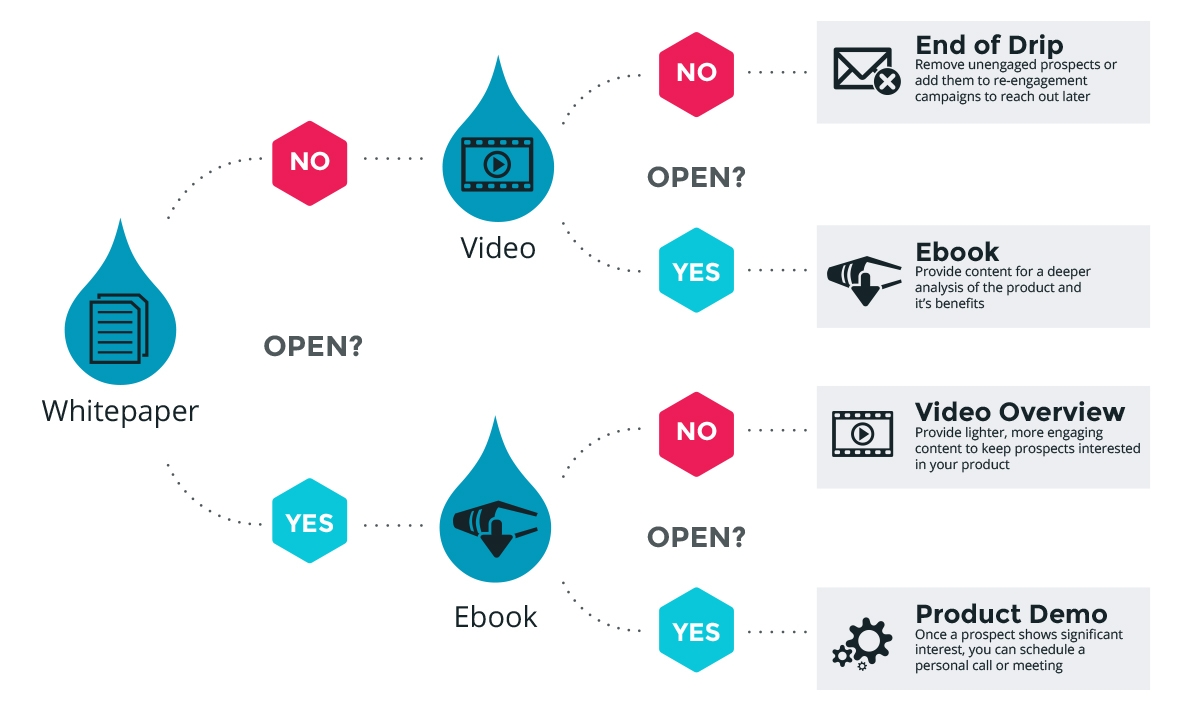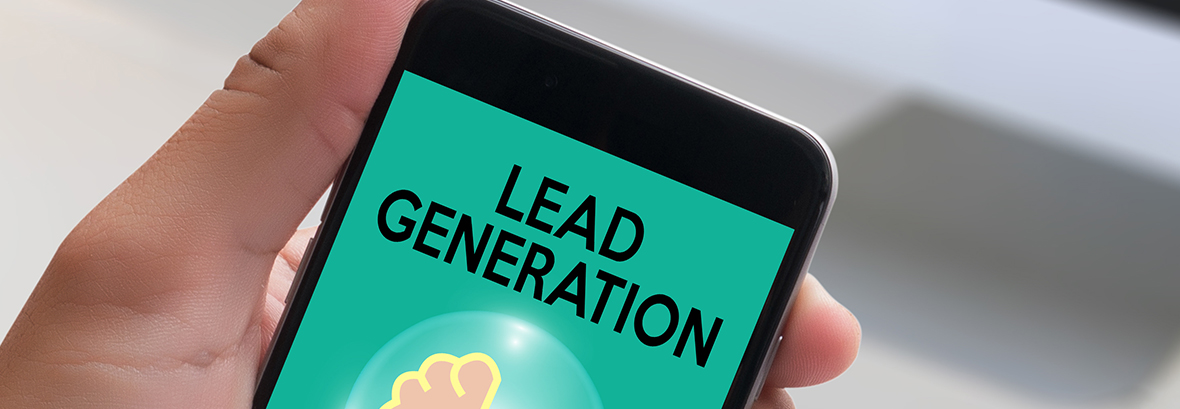When it comes to creating content for the the various types of marketing automation campaigns, one size definitely does not fit all. Let’s take a look at some specific ways content is used in these.
>> Download the Whitepaper: How to Leverage Content Marketing to Power Your B2B Marketing Automation Funnel
Email Subscriber Program
When it comes to TOFU content, your email subscriber program is your chief player. And people at the TOFU are looking for information, not calls to action to buy.
This is where someone visiting your website, reading your blog or consuming other content has raised their hand to be on your mailing list to receive more information such as newsletters, blog posts, how-to’s and upcoming event information. These are emails that are scheduled to go out on a regular basis.

Though almost every type of content can be appropriate for your subscriber program, by far the most common TOFU content will be your blog articles. These are great because they drive the customer to your blog for valuable content, where they can also receive additional offers for ebooks, whitepapers and other free content that will drive them into the middle of the funnel.
Though there shouldn’t be formal calls-to-action here, your signature should contain contact information and a soft CTA link to a free demo, test drive or more information specific to your product or offer. This usually takes the form of a P.S. or a simple sentence along the lines of, “Start your free demo and find out how quickly we can help grow your business.”
Email Education Drip
Education drips are (obviously) for educating the consumer, so you can use every form of content previously discussed, depending on where and when the content falls in the drip.
Unlike a subscriber program, where information is sent out on a regular, recurring schedule, a drip campaign sends out emails based on:
- Predetermined time intervals
- The action taken by the lead
- Or a combination of both
This is an efficient use of your resources, because it means you can automatically nurture prospects from the top of the funnel to the bottom, without involving members of your sales and marketing teams until the lead is ready to buy.
You should already have an understanding of who’s responding to your marketing, and an added benefit of an education drip is that the triggering action gives even more specific information about what the lead is interested in. This allows you to be more focused and specific when choosing which content will be most effective for subsequent emails.
Let’s take a look at a basic education drip:
- Say that the triggering event for the drip was the lead asking for a white paper about the effectiveness of A/B testing
- You know they’re interested in testing, so if they open the whitepaper, you can follow up by sending them an invite to a webinar that dives a little deeper into the subject
- If they don’t open the white paper, you automatically send them an easier-to-consume video or ebook on the same topic.
Here’s an example about how you could map out one such a drip campaign:
Those responding positively to each new piece of content will be eventually be guided to the bottom of the funnel and an offer of a demo or special discount. Those who remain unresponsive to all offers will stop receiving emails altogether, while those in the middle of the funnel will be guided down different nurture paths that will either end at the bottom of the funnel or an end to the drip.
The bottom line is this: A well-designed education drip triggers the most relevant content according to a lead’s specific desires and actions. That’s important, because triggered email messages get 151.9 percent higher click-thru rates than business-as-usual messages, Epsilon reports.
The point of an education drip is to educate, so make sure you’re sending new and valuable content that provides the lead with additional, relevant information at every stage of the drip. Don’t make the mistake of rewrapping the same gift in a different box by simply rewording the same offer and information in every email.
Cold Sales Nurture Drip
This drip campaign is designed for leads that have gone cold. These are generally leads who are familiar with your company and have directly engaged with you in the past.
Because it’s safe to assume they know your company, these emails should take on a more personal tone than other campaigns might. Make them plain text emails from a sales or marketing rep. Because the lead is already familiar with you, the content you use can be much more product/service-specific.
Here’s an example of what a simple four-email drip may look like and the types of content you may employ:
- Email 1: Hi, I’m _____. Here’s some information (ebook, infographic, product video) I thought you’d like. Take a look and give me a call.
- Email 2: Hi. Me again. Here’s a real-world example of how we can help (case study video). When’s a good time to talk? P.S. I also included a link to a (whitepaper, webinar, ebook).
- Email 3: Me again. Don’t know if you had a chance to take a look at what I sent before, but we have an amazing offer right now that is ending soon. And here’s a link to (whitepaper, product sheet) I thought you’d like.
- Email 4: I get it. As much as I hate seeing you miss out on this offer, I can take a hint. I don’t want to waste either of our time, so this will be my last follow-up. Best of luck, and feel free to call me when you think you’re ready.
Your drip may include fewer emails or more, but you get the general progression.
Though there are exceptions to every rule, these emails are best kept to two to three short paragraphs. Use catchy and informal subject lines. For example:
- Email 1 could begin with a subject line like, “Saw this and thought of you”
- Subsequent subject lines could be along the lines of “Checking in,” “Just wanted to follow up,” and “When’s a good time to chat?”
- If they’ve tried a demo of your product before, try a subject line like, “Things have changed” and include content that speaks to new product enhancements
Don’t be afraid to use their name in the subject line, and remember to keep the copy, tone and subject lines personal.
Lead Sales Nurture Drip
Sales nurturing is about building relationships and rapport. By now you have a grasp of drip dynamics, so let’s take a look at what content works best for nurturing sales leads.
Begin your drip with educational content like a blog post, whitepaper or other useful content that also supports and demonstrates the value of your product. For the purposes of this ebook:
- Assume that all the emails we’re discussing are plain text emails coming from someone in your organization
- They should look and feel like personal emails that were written by the sender
- The key here isn’t to sell, but rather to establish yourself and your company as a reputable and reliable source of information
In all drips, when you send each email is important, but that will be discussed in a later section. Here we are simply focusing on which content is more effective and appropriate during different stages of the drip.
The next email in the drip could be in the form of a “checking-in” email that serves as a follow-up to the previous email. It’s also a great opportunity to offer additional content that adds to the content in the first email. It could be another blog post, a webinar or a case study — any content that supports and builds upon the content in the first email.
The following email could link to another blog post, ebook or video designed to push them further down the funnel toward making a decision.
At this point, the hottest leads have been opening your emails and reading your content. If they haven’t reached out to you yet, now would be the time to put them on a different drip sequence designed to move them to the bottom of the funnel.
If they haven’t been reading the content, it’s probably time to send them a final check-in email and end the drip.
MQL Nurture Drip
Remember when we discussed the Marketing Qualified Lead (MQL) earlier? An MQL is simply someone who has raised their hand to receive some type of marketing content.
And remember when we discussed the funnel? It’s important to remember that the middle of the funnel gets progressively narrower toward the bottom, and the content within MOFU should do the same. That is to say, the further along the funnel they go, the more the content becomes more specific to your product offering.
For example, say someone at the top of funnel had responded to earlier emails by reading a blog in one email, clicking on a link to an infographic in another, and then raised their hand to receive an ebook or whitepaper. The action of raising their hand has made them an MQL and triggers moving them into a new drip, similar to the one discussed in the section on Education Drips — a drip that will continue to guide them through the funnel based on their actions. Ideally, it will lead them to the bottom of the funnel and a sale.
The first email they’ll receive in this drip is a “thank you” email that provides them the link to requested content. At this point, they should be regarding you as a trusted authority, so the content here — be it ebook, whitepaper, webinar or testimonial video — should provide information specific to whatever problem they’re trying to solve, and more specifically, how you can help solve the problem for them.
Those who don’t open emails will be guided down a pathway that will either re-engage them or result in the end of the drip.
Likewise, opening content triggers the sending of more detailed, product-specific content. If they open the whitepaper, they may receive a video or webinar. A positive response to that will probably result in offering a test drive, free trial, consultation or product demo — something that will move them to becoming a Sales Qualified Lead (SQL) at the bottom of the funnel.
SQL Nurture Drip
These are your hottest leads. They are primed to buy and the faster you can get them to a salesperson, the better your chances of converting them into a customer. Your offer(s) of a free trial, consultation, evaluation or test drive enticed the customer into trying your product or service. Now it’s up to a salesperson and/or a strong offer to close the deal.
Leads that don’t convert to a sale can remain in your subscription program, where one of two things will happen:
- Your content keeps you top-of-mind for when they are ready to buy
- Or, they’ll simply become cold and saved for a cold lead nurture campaign, in which you may be able to re-engage them at a later date
Ready to learn more about how great content powers your funnel? Our whitepaper explains the types of content, when to use each and how to gather content intelligence. Download “How to Leverage Content Marketing to Power Your B2B Marketing Automation Funnel” today.








